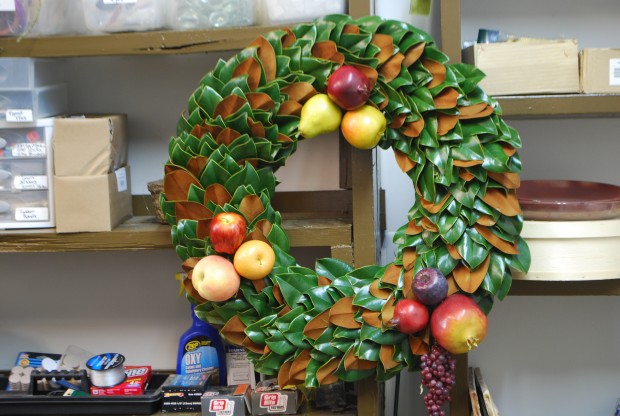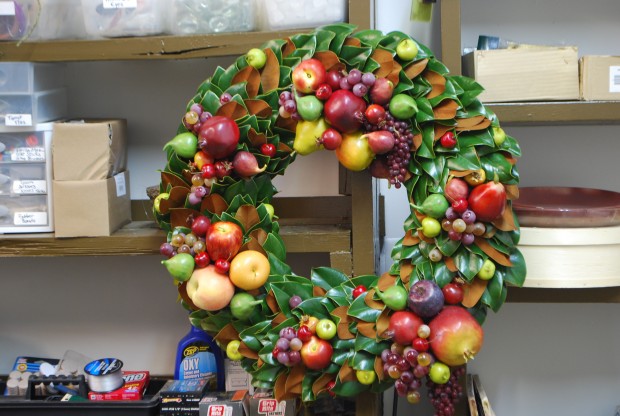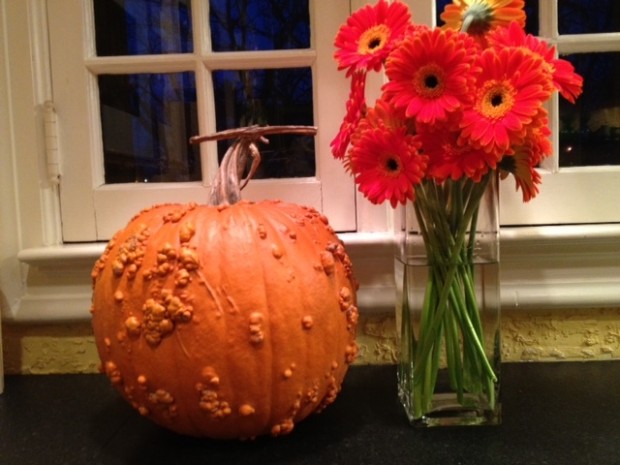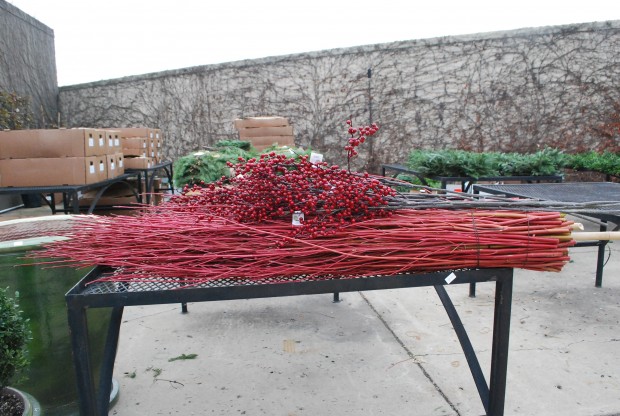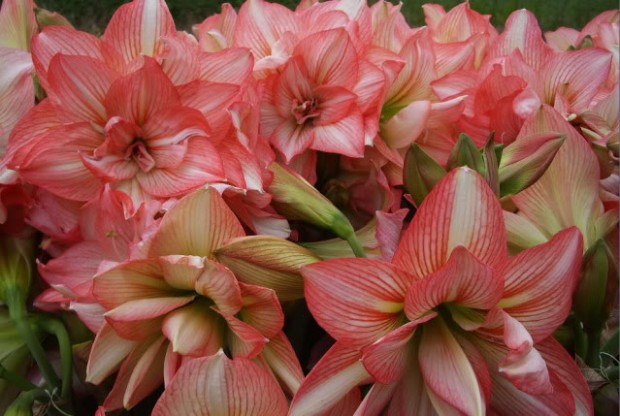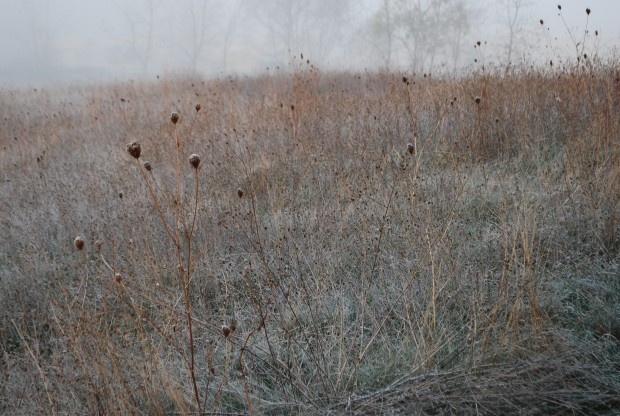Though my 8th grade American history book ascribed the first Thanksgiving holiday to the Pilgrims for the bounty of their harvest in 1621, many cultures celebrate some version of Thanksgiving. Sometimes referred to as a harvest festival, a great crop yield meant food would be available for all during the winter. I cannot imagine being responsible for growing the food I would need to survive the winter, much less the survival of many. Issues of life and death are much better left to physicians, theologians, parents and teachers than me. But celebrating the harvest, and giving thanks, is a tradition in our culture that I value. We buy magnolia wreaths, garland and stems for the holidays from a company whose sole crop is magnolia cuttings. When the trees are well looked after, they grow. They weave the harvested branches onto heavy galvanized steel frames.
Their construction is worth it. A magnolia wreath will dry; properly cared for, it will last many years. Their classic wreath features both the front, and the brown felted backs of the leaves. This 30 inch wreath is perfect for a front door, or over the mantel. A client from out of state wanted a magnolia wreath decorated with fruit. She is in town visitng her kids for the holiday. Would I be able to get it ready for her to take home? Holiday decorations focused on fruit is a holiday tradition dating back to the delle robbia wreaths in Italy. Traditional Williamsburg is noted for their fruit centered holiday decor. I am both appreciative and thankful for that precedent.
Traditions come with that aura of connection-whether they be cultural, religious, regional or neighborhood oriented. One generation to the next. Every creative expression has roots. I am thankful to have a few clients every year who are interested in this particular and traditional representation of the celebration of the harvest. It is comforting to feel a part of something that came before, and will go on beyond. My faux fruit are most certainly not part of this tradition. But they will age with the same grace as the wreath.
I am thankful to have a professional gardening life that allows me to design. I am more than thankful for those many opportunities clients provide to make something grow. Yes, I did go to work today to make this wreath. I have lots of good reasons. The corgis dislike having their go to work routine interrupted. Buck dislikes being distracted when he is planning a holiday dinner. I enjoy the opportunity to be at work making something, uninterrupted.
I start with the major fruits-by this I mean the fruits of considerable size. I pierce them with an awl, and insert a floral pick coated in glue. Sturdy and solid construction is a must. Yes, I am thankful for that company that makes wired floral picks. That pick wedged into the wreath frame means that heaviest of the faux fruit is secured to wreath frame.
The finished wreath is a traditional nod to the celebration of the harvest. Our 2012 gardening season was not the easiest. Bitter and very late frosts damaged so many plants. A summer that was incredibly hot and even more dry-daunting. Many local farmers harvested more disappointment than anything else.
But no matter the trouble, there is always something, and more importantly, someone to be thankful for. A good friend, a family member, an associate, a client-so many people who deserve thanks. A practical knowledge of traditional expressions provides a solid base from which to move on. I am thamkful to have a culture that provides community.
My sole contribution to our Thanksgiving? A very good looking pumpkin, and a vaseful of orange gerbera daisies. Our Thanksgiving tradition-I am grateful for it.


